North Carolina State University, James B. Hunt Jr. Library
A new state-of-the-art library gives a campus a heart
Raleigh, North Carolina, US
Download PDF (912.9 KB)
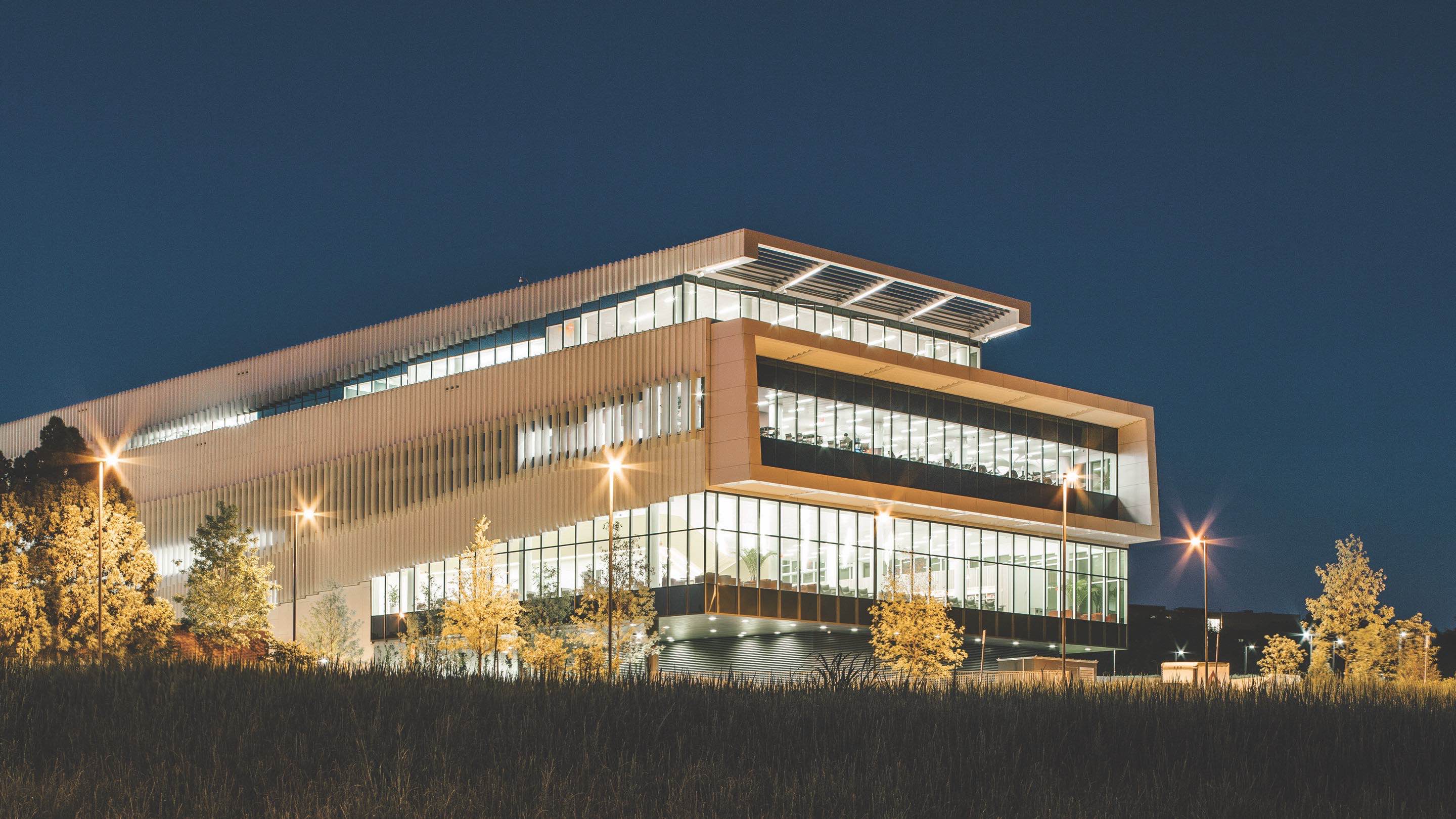
When administrators at North Carolina State University (NC State) decided to build the James B. Hunt Jr. Library at their Centennial Campus in Raleigh—a unique research park that encourages collaboration between the university, government agencies, and some of the world’s most innovative companies—they wanted to create a building that would strongly position the campus as a place of the future.
To see evidence of this intent, look no further than the bookBot, a robotic system that delivers in less than five minutes any of two million books that students can select from a virtual catalog. The system, which stores the books in 18,000 bins, has allowed the university to shift their focus from storing books to accommodating the diverse needs of students and faculty.
“The robotic system came into play, which gave us 10 times more footprint to give the students, faculty, and staff areas where they have a myriad of choices,” said Gwendolyn Wood Emery, Director of Library Environments. “They love the choices—from individual spaces to those that are more open.”
The bookBot is just one of many state-of-the-art design considerations at the Hunt Library. The $115-million library, designed by the architecture firm Snøhetta, features: media-production rooms; a visualization lab with a 270-degree digital display; a Makerspace with 3D printers, 3D scanners, and laser cutters; and almost 100 group study rooms (up from 12 at the library on the main campus), all of which offer video conferencing.
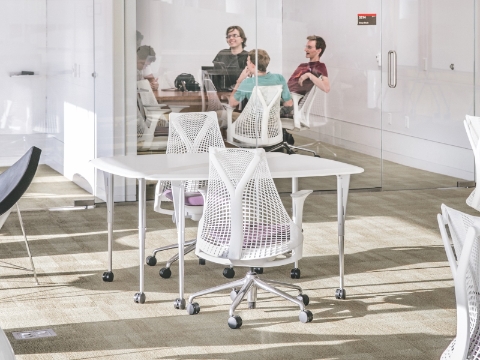
The library offers a variety of settings, including enclosed group spaces, casual areas where small groups can share work, and quiet spots where students can relax and check email.
“One of our main design intents was to create a space where collaboration was very easy, where people could gather formally or informally—a place that would become part of the working lives of students,” says David Hiscoe, Director, Communication Strategy, External Relations, for the NC State libraries.
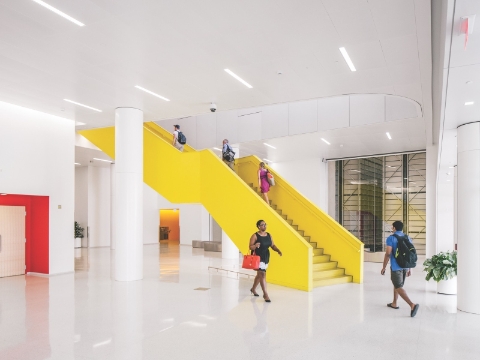
As students enter the library, they get a view of the high-density automated bins of books that the bookBot is ready to deliver.
Students aren’t the only ones who find the library essential to the learning experience.
“To date, we’ve had almost 25,000 people show up for tours since we’ve opened,” says Hiscoe. “It’s almost like a medieval cathedral—the experience of being there was moving. I think we’ve been able to create a building that’s sort of a modern equivalent of that.”
From architecture to furniture to the latest technology, the Hunt Library inspires a broad range of visitors—from children mesmerized by the bookBot to administrators from academic and public libraries worldwide interested in drawing on the Hunt design team’s approach to programming the space.
The facility also serves as a paragon of environmentally sensitive design. The LEED-certified building features rooftop gardens, floor-to-ceiling expanses of glass, an innovative chilled-beam air-conditioning system, and ceilings soundproofed in part with fabric from recycled blue jeans.

Students frequent the library because it offers all of the resources they need to work and study, including seamless connection to power and data.

Students and faculty have access to smaller study rooms for individual or group work.
The library is also evolving with the changing needs of the campus community. Administrators regularly meet with groups of students to discuss how the space is working for them.
“Perhaps the best quantifiable feedback is one of the things we did when we opened,” says Hiscoe. “Students could take a photograph, put it on Instagram, and tag it as #myhuntlibrary. Our expectations were if we got 150 photographs, we would be really happy. We ended up getting over 4,000. There is a real pride in the building—a real sense that this is a fun place to be and a place that encourages creativity and exploration.”
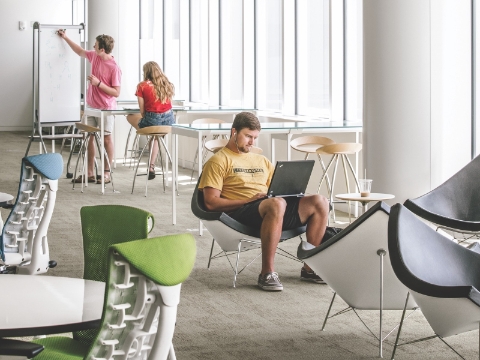
Casual open settings encourage spontaneous interactions where students can learn from one another.
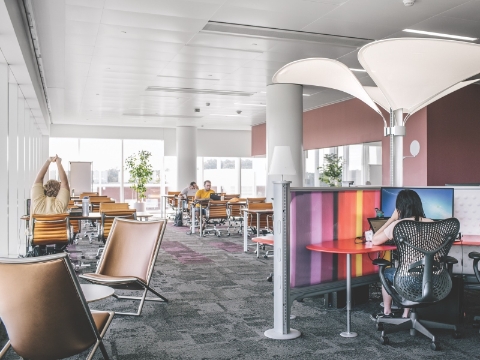
A mix of furnishings gives students a choice of postures for study—from sitting to standing to reclining.
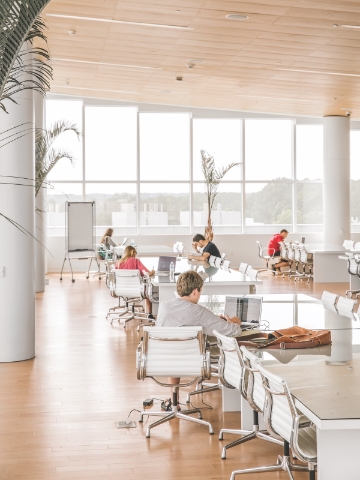
Whether collaborating or working alone, students have an array of choices and plenty of access to natural light.